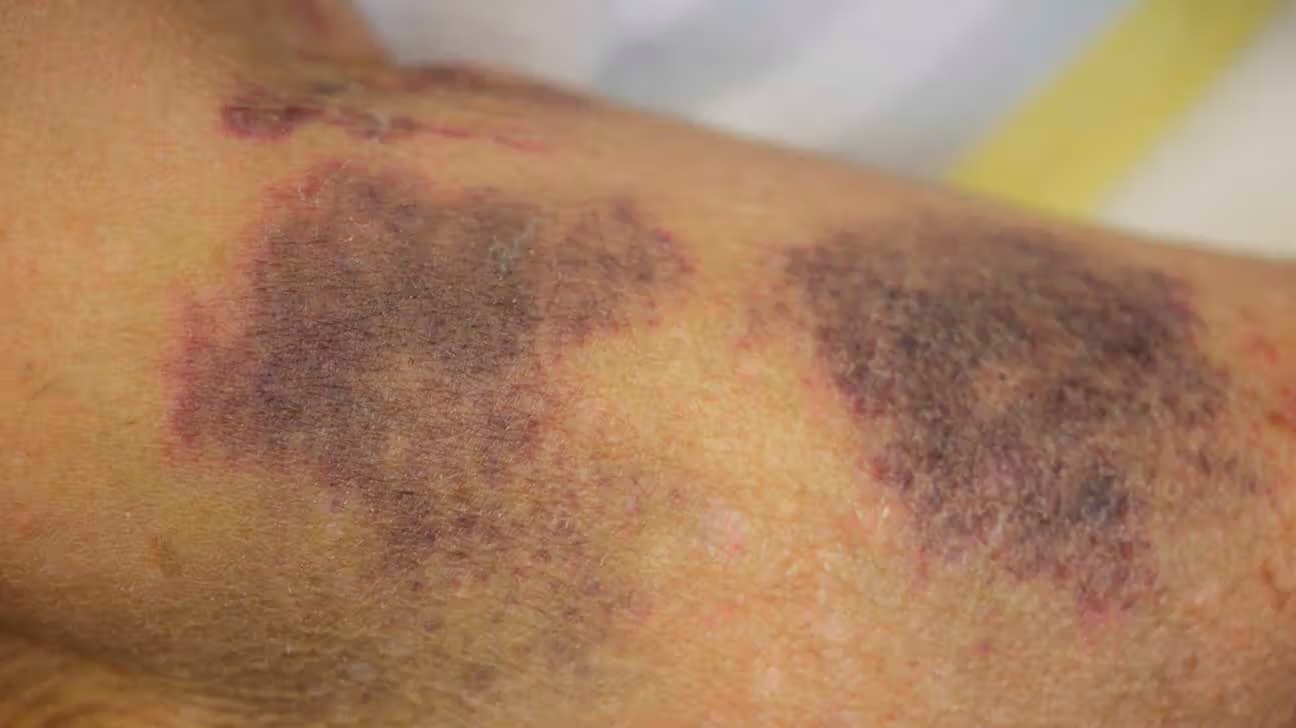
Purpura might sound like a mysterious term, but it's actually a medical condition that many people experience. Purpura refers to purple spots or patches on the skin caused by small blood vessels leaking under the skin. These spots can vary in size and often appear without any injury. Purpura can be a sign of various health issues, ranging from minor to serious. Some common causes include infections, medications, and blood disorders. Understanding Purpura is important because it helps in identifying underlying health problems. In this blog post, we'll explore 26 fascinating facts about Purpura to help you better understand this condition and its implications.
What is Purpura?
Purpura is a medical condition characterized by purple spots or patches on the skin, mucous membranes, or organs. These spots are caused by small blood vessels leaking under the skin. Let's dive into some fascinating facts about this condition.
-
Purpura can be a sign of various underlying health issues, such as blood disorders, infections, or even certain medications.
-
The term "purpura" comes from the Latin word for purple, reflecting the color of the spots.
-
There are two main types of purpura: non-thrombocytopenic and thrombocytopenic. The difference lies in whether the condition is related to a low platelet count.
-
Non-thrombocytopenic purpura is often caused by conditions that affect blood vessel integrity, such as vasculitis.
-
Thrombocytopenic purpura, on the other hand, is related to a low platelet count, which can be due to conditions like immune thrombocytopenic purpura (ITP).
Symptoms and Diagnosis
Understanding the symptoms and how purpura is diagnosed can help in managing the condition effectively.
-
Symptoms of purpura include purple or red spots on the skin, which do not blanch when pressed.
-
These spots can vary in size, from tiny dots (petechiae) to larger patches (ecchymoses).
-
Purpura can appear anywhere on the body but is most commonly found on the legs, arms, and buttocks.
-
A doctor can diagnose purpura through a physical examination and medical history. Blood tests may also be conducted to determine the underlying cause.
-
In some cases, a skin biopsy may be necessary to confirm the diagnosis and rule out other conditions.
Causes of Purpura
Various factors can lead to the development of purpura. Let's explore some of the common causes.
-
Infections such as meningococcemia, endocarditis, and Rocky Mountain spotted fever can cause purpura.
-
Certain medications, including blood thinners and chemotherapy drugs, can lead to purpura as a side effect.
-
Autoimmune diseases like lupus and rheumatoid arthritis can also cause purpura.
-
Vitamin deficiencies, particularly vitamin C (scurvy) and vitamin K, can result in purpura.
-
Blood disorders, such as leukemia and hemophilia, are known to cause purpura.
Treatment Options
Treatment for purpura depends on the underlying cause. Here are some common approaches.
-
If purpura is caused by an infection, antibiotics or antiviral medications may be prescribed.
-
For purpura related to autoimmune diseases, corticosteroids or other immunosuppressive drugs might be used.
-
Vitamin supplements can help if the condition is due to a deficiency.
-
In cases of drug-induced purpura, discontinuing the offending medication is crucial.
-
For severe cases, treatments like intravenous immunoglobulin (IVIG) or platelet transfusions may be necessary.
Interesting Facts
Here are some intriguing tidbits about purpura that you might not know.
-
Purpura is more common in older adults due to the thinning of the skin and blood vessels with age.
-
Henoch-Schönlein purpura (HSP) is a type of purpura that primarily affects children and is often preceded by an upper respiratory infection.
-
HSP can cause joint pain, abdominal pain, and kidney issues in addition to the characteristic skin spots.
-
Purpura can sometimes be mistaken for bruises, but unlike bruises, purpura spots do not change color as they heal.
-
In some cultures, purpura has been historically mistaken for signs of poisoning or supernatural afflictions.
-
Early detection and treatment of the underlying cause of purpura can significantly improve outcomes and prevent complications.
Final Thoughts on Purpura
Purpura, with its distinctive purple spots, is more than just a skin condition. It can signal underlying health issues, from minor injuries to serious blood disorders. Knowing the types—thrombocytopenic and non-thrombocytopenic—helps in understanding the root cause. While it might look alarming, not all cases are severe. Some result from simple bruising, while others might need medical attention. Treatments vary, from addressing the underlying cause to specific medications. Always consult a healthcare professional if you notice unexplained spots. Staying informed about your health is crucial. By recognizing the signs and symptoms early, you can seek timely care and avoid complications. Remember, your skin often reflects your overall health, so don't ignore what it’s telling you. Stay curious, stay informed, and take care of your body.
Was this page helpful?
Our commitment to delivering trustworthy and engaging content is at the heart of what we do. Each fact on our site is contributed by real users like you, bringing a wealth of diverse insights and information. To ensure the highest standards of accuracy and reliability, our dedicated editors meticulously review each submission. This process guarantees that the facts we share are not only fascinating but also credible. Trust in our commitment to quality and authenticity as you explore and learn with us.
